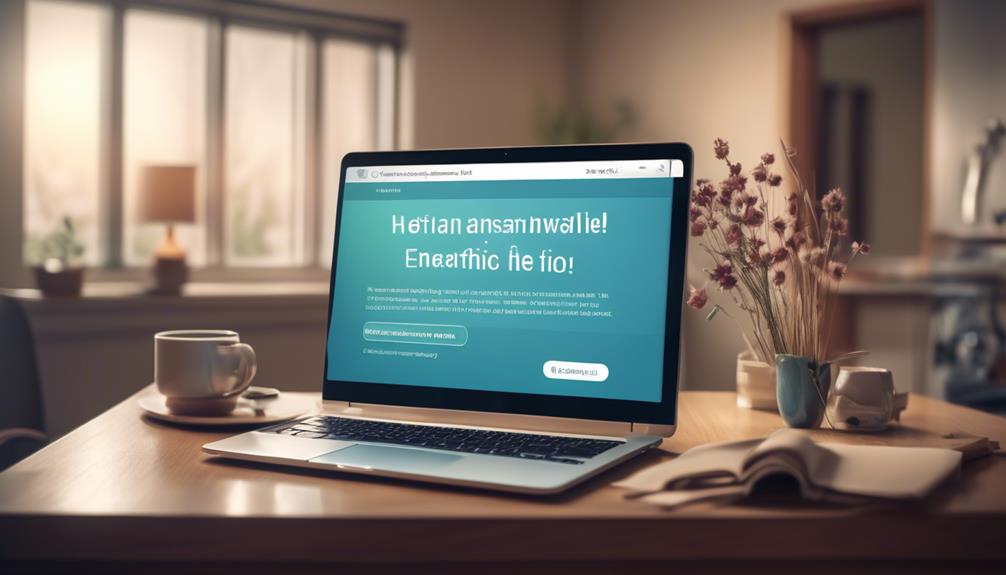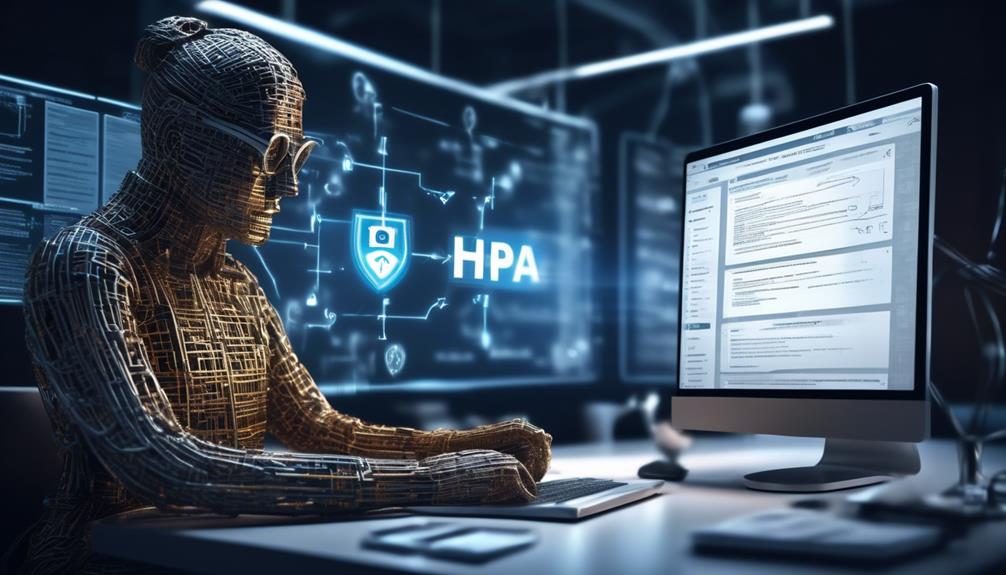Have you ever wondered about the impact of the tone in an email on a patient's experience?
It's intriguing how a simple email can make a significant difference in how a patient perceives their care.
Let's explore the nuances of crafting an email that not only conveys information effectively but also shows empathy and understanding towards the patient.
Key Takeaways
- Use patient's preferred title and name for personalized communication.
- Show genuine empathy and understanding to foster a positive patient-provider relationship.
- Structure content with clear and concise bullet points, avoiding excessive jargon.
- Ensure HIPAA compliance by using secure platforms, obtaining patient consent, and safeguarding information.
Addressing the Patient Appropriately
When addressing a patient in an email, it's essential to use their preferred title and name to convey respect and establish a personalized connection. Patients appreciate the effort put into recognizing their individuality, making them feel valued and cared for.
In our clinic, we understand the significance of personalizing emails to show genuine concern for the patient's well-being. By using templates that allow for customization based on the patient's specific health needs or appointment requirements, we can provide a more tailored and empathetic approach to communication.
Our goal is to help patients feel comfortable and supported throughout their healthcare journey, starting from the moment they receive an email from us. We avoid using medical jargon and instead opt for clear, friendly language that fosters understanding and trust.
Using Empathetic Language

To effectively convey genuine concern and compassion for the patient's well-being and emotions, we utilize empathetic language in our email communications.
Using empathetic language is crucial in establishing a supportive and understanding relationship with our patients.
When crafting emails, we ensure to:
- Show genuine empathy and understanding: We acknowledge the patient's emotions and experiences, demonstrating our compassion and care throughout the communication.
- Use compassionate language: Our choice of words aims to convey support, reassurance, and a sense of comfort to the patient, fostering a positive patient-provider relationship.
- Offer encouragement and validation: We address any concerns or challenges the patient may be facing, using positive and encouraging language to engage with them effectively.
Structuring Clear and Concise Content
In our communications with patients, we aim to convey genuine empathy and compassion by structuring our content in a clear and concise manner, ensuring that information is easily digestible and readily understood. To achieve this, we utilize bullet points to break down information into easily digestible chunks and start each point with a clear statement. Maintaining parallel structure across bullet points helps in consistency, while avoiding excessive jargon or technical terms ensures clarity. Keeping bullet points short and focused on key information aids in patient engagement. In addition, using clear subject lines and organizing emails with headings enhances readability. Below is a table exemplifying how to structure clear and concise content in patient communication:
| Best Practices for Structuring Content | |
|---|---|
| Use bullet points for easy digestion | Start each point clearly |
| Maintain parallel structure | Avoid excessive jargon |
| Keep points short and focused | Use clear subject lines |
| Organize with headings for readability | Proofread for errors before send |
Ensuring HIPAA Compliance

We prioritize patient privacy and confidentiality by diligently ensuring HIPAA compliance in all email communications. When it comes to email communication in healthcare, we understand the critical importance of safeguarding sensitive patient information. To ensure HIPAA compliance, we take the following steps:
- Use Secure and Encrypted Platforms: We utilize secure and encrypted email platforms to transmit any patient information safely.
- Obtain Patient Consent: Before communicating any health information via email, we obtain written consent from the patient to ensure their acknowledgment and authorization.
- Train Staff Regularly: Our team undergoes regular training sessions on HIPAA regulations and best practices for email communication to maintain a high standard of compliance and understanding.
Adding a Personal Touch
As we strive to enhance patient engagement and connection, incorporating personalization into our email communications is key to fostering meaningful relationships. Adding a personal touch to our emails shows patients that we care about them as individuals, not just as another appointment on the schedule. By customizing emails with their name, appointment details, and a warm welcome, we can create a more personal connection that resonates with the patient. Infusing our emails with a friendly tone, sharing helpful information, and even a touch of humor can make the communication more engaging and memorable for the patient.
| Personal Touch Tips | Examples |
|---|---|
| Address patient by name | "Hello, [Patient's Name]!" |
| Share personal anecdotes | "I remember when we first met…" |
| Use conversational tone | "Hope you're doing well!" |
| Offer additional support | "Here are some resources for you." |
Frequently Asked Questions
How Do You Write a Follow up Email to a Patient?
We write follow-up emails to patients with care and attention, ensuring they feel valued and supported. Our messages express gratitude for the visit and provide post-appointment instructions. We also offer assistance for any queries that patients may have.
In addition, we encourage patients to schedule their next appointment and show appreciation for their trust.
How Do You Write a Caring Email?
When writing a caring email, it's crucial to strike a balance between professionalism and empathy. We aim to connect with the recipient on a personal level, using a warm and friendly tone.
Including personal details, engaging calls to action, and sharing relevant information can enhance the email's impact. Our goal is to create a message that's both informative and compassionate, leaving the recipient feeling valued and supported.
How Do You Write a Professional Email to a Doctor?
When writing a professional email to a doctor, we should maintain a respectful tone and address them by their appropriate title and last name.
It's important to clearly state the purpose of the email in the subject line and begin with a polite greeting.
Providing necessary information concisely and professionally is key.
Remember to end the email with a polite closing and signature to ensure a professional and courteous exchange.
How Do You End an Email to a Patient?
Do we truly understand the impact of our closing words on a patient?
It's vital to end emails with a warm and professional tone, expressing gratitude for their trust and time.
Always offer further assistance and end on a positive note, like wishing them a speedy recovery.
Are the Same Professional Email Writing Techniques Applicable to Both Patient and Boss Communications?
When it comes to email writing tips for boss and patient communications, the approach should differ. While professionalism is crucial in both cases, the tone should be more formal and directive for boss communications, whereas a more empathetic and informative approach is needed for patient communications.
Conclusion
In conclusion, writing an email to a patient requires clear and empathetic communication.
Despite concerns about privacy, using plain language and providing necessary information can ensure patients feel informed and supported.
By following these guidelines, healthcare providers can effectively communicate with patients and address their needs in a professional and caring manner.










